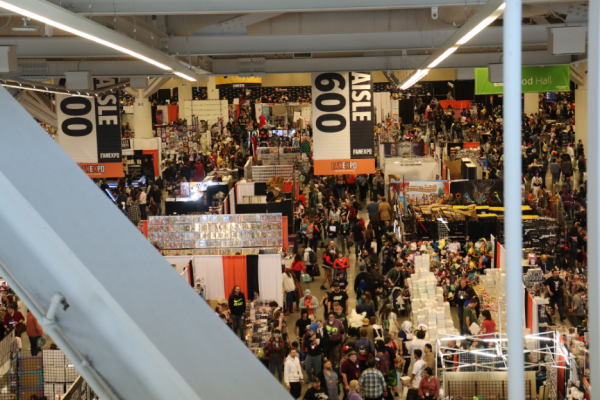As summer nears, pumping gas may get more expensive
April 3, 2007
Pumping gas yet again puts a strain on consumers’ pocketbooks.
Natasha Brobst, junior business management major, knows this all too well as she drives more than 50 miles each day round trip to school. Her mileage doubles on the weekend when she drives 120 miles to visit her fianc‚. It costs her almost $50 to fill her Jeep SUV.
“It puts a huge strain on my budget,” Brobst said. “I have other essentials for school and home that I need to buy. I’m also trying to save money for my wedding this summer. It can be very difficult.”
Prices at the pump have risen and fallen sharply during the past year. Prices climbed to $3 per gallon last summer. In January, they fell to nearly $2 per gallon. However, prices have steadily risen since then. They now sit at around $2.60 per gallon at area gas stations.
Laurie Falter, industry economist with the Energy Information Administration, said several factors are causing the price fluctuations.
“When refineries get a barrel of crude oil, they must decide what they’re going to make with it — gasoline, diesel, heating oil,” Falter said. “This decision will be driven by market demand for certain products. The refineries are trying to decide how they can make the most profit.”
She said the mild first half of the winter played an indirect role in determining prices at the pump. Refineries produced less heating oil because there was less demand for it because of the mild winter weather. They were able to produce more gasoline, which increased the supply and brought down the price.
Events in the Middle East have also affected the price of gasoline. The recent capture of British sailors by Iranian forces could have an effect on prices as tensions in that part of the world affect the supply of crude oil, Falter said.
Many refineries also shut down for routine maintenance during the spring. The supply of gas goes down during this time, and the price typically increases, Falter said. Several refineries have experienced unplanned outages this year, which has further decreased the supply of gasoline.
Falter said the price will likely increase as the demand for gas increases with the summer driving season. The price usually peaks around Memorial Day and then again in July or August.
“It’s a basic lesson of Economics 101 and supply and demand,” Falter said. “When the supply of gas goes down or the demand goes up, the price will increase. That’s what we’ve been seeing throughout the past few months.”
Bevi Powell, director of communications for AAAs East Central Division, said people haven’t cut back on their road trips despite price hikes.
“We’re still seeing a record-breaking number of travel trips,” Powell said. “People may not be traveling as far as before, but they still take their trips.”
She said people should read the owner’s manual to determine the grade of gasoline they should use. Often people pump a higher, more expensive grade of gas into their car when a less expensive grade will do.
Brobst said she tries not to think about the changes in gas prices.
“I don’t really think it’s necessary for prices to change so often,” she said. “I don’t really trust the reasons we hear all the time on the news.”
She said she’s used to the price changes.
“I haven’t heard as much complaining about the price hikes this time,” Brobst said. “I think everyone was expecting it to happen.”
Contact public affairs reporter Trevor Ivan at [email protected].























